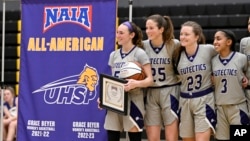Student Union
- By Hau Hoang
How to Speak English Fluently?
The most popular question I get from my friends in Vietnam is how to speak English fluently and correctly. I realize that it is a aching question that not just my friends, but also learners of this global language are trying to answer. In my case, even though I was taught English since the beginning of middle school in Vietnam, the things I learned then were barely adequate to carry out a conversation or even write up a letter in correct grammar.
In 9th grade, I decided to focus on studying English intensively on my own, which helped me land a scholarship to study in America through an exchange program – a thrilling turn for my education.
Obviously, being in the native speaking environment was a golden advantage, but at the same time, I still had to study and practice the language. By the end of high school, I was very confident with my English skills. All of my hard work paid off even more in college, because the classes at St. John’s College are discussion-based, so there’s a lot of talking.
Here are some of the things that worked for me when I was learning English. Since everyone has a different learning style, what worked for me won’t necessarily be best for you, but hopefully this will at least help you along.
Listen as much as possible
As I recall, the pronunciation I was taught in middle school in Vietnam are mostly incorrect. This is a common case because English pronunciation is not at all straightforward. There is nothing like the difficulty in trying to pronounce some of English's most difficult words. For me, the toughest words to master were words like "weird," "judge," and "noodle."
What helped was listening to native English speakers as much as possible, either through tapes, CDs, movies, or most prominently, the internet. I’m not exaggerating in saying that American movies and music were my principal English teachers in 9th grade. I would buy CDs of Westlife and Britney Spears, download the lyrics and sing along to the songs. And once in a while, my sister would bring me from Hanoi DVDs of American movies which I would watch over and over, and practice reading the subtitles along with the actors. I can still recite word-by-word the whole script of Mean Girls.
In this way, my English study was basically an immersion, though indirect, in the English language as well as the American culture. My pronunciation and speaking skill therefore improved very quickly. I got to learn the real English – what real Americans say to each other in everyday life; for example, saying "How are you doing?" instead of the ordinary "How are you?"
Judge yourself
When you practice speaking by repeating along with a recording, be somewhat hard on yourself, try to imitate as close as possible to the speaker's pronunciation, and most importantly, the intonation of the sentence - this will help you carry out a more natural and smooth conversation in English.
It is also very helpful to have a dictionary with International Phonetics Alphabet (IPA) pronunciation (I recommend Oxford, Macmillan, or Dictionary.com for those who have home internet access). Of course, the first step would be to learn how to read the IPA symbols (some YouTube videos can help teach you that). I always use this guide to learn the pronunciations of new words, and also to make sense of the pronunciation in the recording.
Specifically, by looking at the "anatomy" of the pronunciation, you will be able to greatly improve your pronunciation. For example, since Vietnamese words all have one syllable, a lot of Vietnamese pronounce the word “hôm” for “home” since their sounds are seemingly equivalent. When you look up the IPA pronunciation of this word, however, you will see that it actually consists of two syllables /ho-ʊm/. As a result, you should practice perfecting your pronunciation by saying the two syllables separately and quickly. Eventually it will become an instinctive thing to pronounce “home" in that correct manner.
Variety is key
For me, the key to speaking English fluently is sentence structures. The more structures you know, the more comfortable you will be when trying to express your thoughts.
My advice would be try to master the fundamental structures - “for example,” “I think that,” “it is interesting that,” “I find it,” “it is better to,” “not only … but also” - by practicing them over and over. A good familiarity with the structures will help with the coherence of the conversation.
As you expand your knowledge in sentence structures, it is also important to augment your vocabulary. It is always wise to constantly try new words in conversation due to the mutual relationship between speaking and learning new words: you need more words to express your thoughts precisely, and at the same time, it is easiest to learn new words when they are uttered and put in context.
Learning to speak English fluently is a difficult task. On top all of the tips I listed above, my final advice would be to practice as much as possible because really, practice makes perfect. Good luck everyone!
See all News Updates of the Day
With federal student aid delays, students aren’t sure what college will cost

The U.S. Department of Education’s federal student aid form (FAFSA) experienced serious glitches and delays this year.
Now, many students have been admitted to college, but don’t know how much money they’ll need to attend.
Read the story from Susan Svrluga and Danielle Douglas-Gabriel for The Washington Post. (March 2024)
Senator draws attention to universities that haven’t returned remains

More than 70 U.S. universities continue to hold human remains taken from Native American burial sites, although those remains were supposed to be returned 30 years ago.
Jennifer Bendery writes in Huffington Post that one senator has been using his position in an attempt to shame universities into returning remains and artifacts. (April 2024)
COVID forced one international student to go hungry

When Samantha (not her real name) enrolled in community college in the U.S., her family at home in South Africa scrimped and saved to support her.
But the COVID-19 pandemic hurt the family’s finances, and at one point Samantha had four on-campus jobs just to make ends meet. Many in the U.S. believe international students are wealthy sources of funding for universities, but stories like Samantha’s suggest otherwise.
Andrea Gutierrez reports for The World. (March 2024)
Tips for paying for a STEM degree as an international student

For US News & World Report, Melanie Lockert describes how to calculate the cost of a STEM degree, and where to find funding. (March 2024)
NAIA all but bans its transgender college athletes from women's sports

The National Association of Intercollegiate Athletics, the governing body for mostly small colleges, announced a policy Monday that all but bans transgender athletes from competing in women's sports.
The NAIA's Council of Presidents approved the policy in a 20-0 vote. The NAIA, which oversees some 83,000 athletes at schools across the country, is believed to be the first college sports organization to take such a step.
According to the transgender participation policy, all athletes may participate in NAIA-sponsored male sports but only athletes whose biological sex assigned at birth is female and have not begun hormone therapy will be allowed to participate in women's sports.
A student who has begun hormone therapy may participate in activities such as workouts, practices and team activities, but not in interscholastic competition.
"With the exception of competitive cheer and competitive dance, the NAIA created separate categories for male and female participants," the NAIA said. "Each NAIA sport includes some combination of strength, speed and stamina, providing competitive advantages for male student-athletes. As a result, the NAIA policy for transgender student-athletes applies to all sports except for competitive cheer and competitive dance, which are open to all students."
There is no known number of transgender athletes at the high school and college levels, though it is believed to be small. The topic has become a hot-button issue for those for and against transgender athletes competing on girls' and women's sports teams.
At least 24 states have laws barring transgender women and girls from competing in certain women's or girls sports competitions. Last month, more than a dozen current and former college athletes filed a federal lawsuit against the NCAA, accusing the sports governing body for more than 500,000 athletes of violating their rights by allowing transgender women to compete in women's sports.
The Biden administration originally planned to release a new federal Title IX rule — the law forbids discrimination based on sex in education — addressing both campus sexual assault and transgender athletes. But earlier this year, the department decided to split them into separate rules, and the athletics rule now remains in limbo even as the sexual assault policy moves forward.
Hours after the NAIA announcement, the NCAA released a statement: "College sports are the premier stage for women's sports in America and the NCAA will continue to promote Title IX, make unprecedented investments in women's sports and ensure fair competition for all student-athletes in all NCAA championships."
The NCAA has had a policy for transgender athlete participation in place since 2010, which called for one year of testosterone suppression treatment and documented testosterone levels submitted before championship competitions. In 2022, the NCAA revised its policies on transgender athlete participation in an attempt to align with national sport governing bodies, following the lead of the U.S. Olympic and Paralympic Committee.
The three-phase implementation of the policy included a continuation of the 2010 policy, requiring transgender women to be on hormone replacement therapy for at least one year, plus the submission of a hormone-level test before the start of both the regular season and championship events.
The third phase adds national and international sport governing body standards to the NCAA's policy and is scheduled to be implemented for the 2024-25 school year on August 1.
There are some 15.3 million public high school students in the United States and a 2019 study by the CDC estimated 1.8% of them — about 275,000 — are transgender. The number of athletes within that group is much smaller; a 2017 survey by Human Rights Campaign suggested fewer than 15% of all transgender boys and transgender girls play sports.
The number of NAIA transgender athletes would be far smaller.









